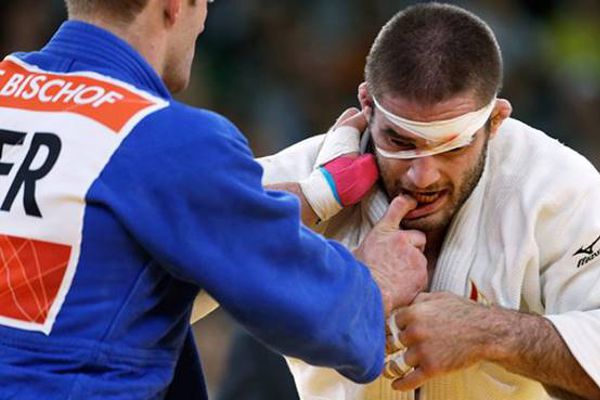A sports injury in the narrow sense of meaning signifies the injury typical of a particular sports activity or a certain sport, according to its mode of occurrence and frequency. It is said that every injury that is typical of the sport in question, or the one that has happened in the sports field, is a sports injury from the legal point of view.
One of the simplest definitions is: “The injury is all the damage to the tissue suddenly generated in a certain, defined and limited time.” From the medical point of view, sports injuries are the part of the traumatology field that deals with injuries, no matter how they occur and where they are. When it comes to sports injuries or damages, the implication is mostly of those caused by mechanical force. Mechanical forces, however, are not considered to be only externally acting, such as a kick of an object, an opponent’s strike or a blow to the ground, but also they can be caused by the contractions of one’s own muscles, such as – Achilles tendon rupture due to strong muscular soleus contraction.
If we talk about the expected probability of a certain risk of injury in a particular sport, as well as in martial arts, then statistics and records of sports injuries are first and foremost problematic. The results of statistical treatment depend on many factors, and these again on the health institution in which they are collected. It is understandable that, if this does not meet all the requirements, it can cause a lot of mistakes that give an incorrect picture of the real situation. Data will be different if you collect it in a general hospital versus collecting it from a specialist sports injury facility. Also, a specialized institution will accept certain selected athletes (especially according to the severity of the injury), so that no real statistical picture can be expected. A more realistic picture of the number of injuries in a particular martial art will be obtained if the number of injuries is brought in proportion to the number of athletes. It is very difficult, and practically impossible to gather correct information on the number of active athletes. Perhaps it is only possible to compare the number of athletes insured (especially against injuries in sports) with the number of reported sports injuries.
According to the severity of injury, sports injuries can be classified as follows;
- the most serious injuries – mortal
- severe injuries – with permanent disability for work and sports,
- medium severe injuries – with longer disability for work and sports,
- easier injuries – with short term inability to work and sport,
- quite light injuries – with short-term incompetence or no reduction in work and sports ability.
By studying the cases of disability and the number of injuries of a number of active athletes, some statistics have determined these possibilities of injury risk;
- to 40 athletes per year – 1 sports injury,
- to 4,000 athletes per year – 1 case of disability,
- to 40,000 athletes per year – one mortal outcome
According to statistics, sports injuries are most often of an easier nature (80% with a disability of less than six weeks).
The most common causes involved in the appearance of sports injuries are;
- the persons themselves (tiredness, neglect, insufficient warming, poor technique, existing or over-illness, unhygienic and disordered life, overcoming their own abiltiies, fear or trembling at the competition, negligence in work, poor motivation)
- another person (deliberate injuries in a sports fight, unintentional injuries, carelessness, poor technique, neglect, roughness in the sport, an opponent who has a better technique, an opponent of excessive body weight)
- Martial Sport itself as a sport in which, according to established and agreed rules, a violent injury to an opponent is permitted
- sport equipment (incorrect or inappropriate clothing or footwear, worn out equipment, poor or insufficient protective equipment) – defective floor in the hall (sliding, damaged, etc.)
- safety measures (poor exercise assistance, ie lack of attention by the instructor)
The most common martial arts injuries in some martial arts styles
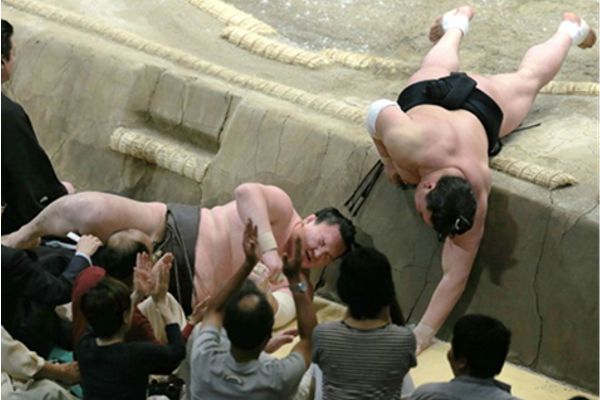
One of the typical martial arts injuries (karate, ju – jutsu, judo, wrestling, MMA etc.) is a joint injury of the fingers. Among the fractures, the most common ones are of the knuckles, the bone fracture of the scaphoideum, as well as the bone fracture under the thumb (especially during the breakout technique – tameshi wari). Typical injuries of boxers (like kick boxing, savate, MMA, muay thai etc.) are various shifts and fractures of the fingers and wrists with damage of the joint hinges. Appropriate bandages, good blow technique and good gloves can help to reduce the fracture of your fingers. One of the frequent injuries is the injury known as a boxer’s thumb. The injury of the boxer’s thumb is the result of repeated spraining of the palatal joint.
Dislocation is most commonly caused by bad techniques when performing hand grips or by badly placed bands. Depending on the severity of the injury, the ability to work, ie sports activity will only be possible after one to two months with minor finger injuries and up to six months in some hand fractures.
Typical wrestling and judo injuries (ju-jutsu, grappling, sumo, MMA, etc.) include numerous cranial and back muscle cramps. Among the muscle injuries in wrestling and judo (ju – jutsu, grappling, sumo, MMA, UF, etc.) the most frequent one is arm muscle damage – biceps. There are also various injuries of the shoulder as well as of the ankle joint. When the opponent drops and throws, the head can hit the ground, and if the kick is strong, brain concussion occurs. Typical wrestlers’ (MMA, grappling, etc.) ear injury is othematoma and if it is repeated, it causes the deformation of the ear – the so called cauliflower ear. Othematoma is hematoma in the earlobe that cannot be resorbed and, therefore, creates characteristic irregularities. For that reason wrestlers use protective ear masks.
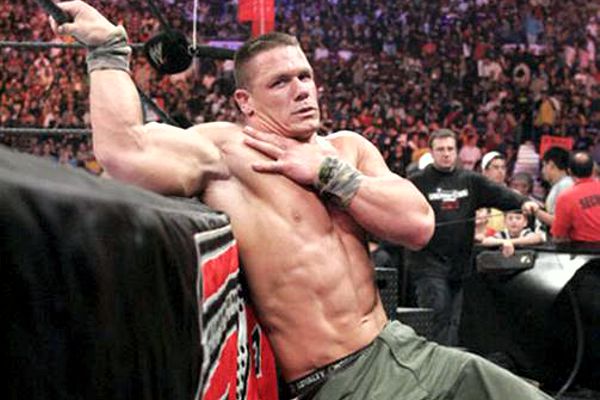
A common occurrence in wrestling is skin irritation at the back of the neck, too. The elbow in judo (wrestling, MMA, etc.) is also exposed to various injuries, especially if the arm is not straightened before the fail. Furthermore, in judo (wrestling, ju – jutsu, MMA, etc.) there is a high frequency of clavicle or rib fracture as well as frequent typical site thumb fractures. Depending on the severity of the injury, the ability to work, ie, sports activity will be possible in ten to fifteen days after brain concussion. To repair the upper leg muscle injury, it will take the contestant from three to five weeks, for elbow joint injuries between eight and ten weeks, and for a bone fracture two to three months, depending on the severity of the injury. For the toe and the elbow bones fractures, the recovery time can be from three to six months. When the rib is broken, the time of remediation is at least four to six weeks.
One of the typical injuries or damage that can be caused by fencing (modern fencing, kendo, Iai do, ko budo, kali, arnis, some forms with weapons etc.) is considered to be inflammation of the median nerve. Due to many movements in the manual wrist, directed downwards, as well as frequent movements with the hand down, there is an elbow injury often described as – the tennis elbow. Such damage is the result of excessive progressive tension of the forearm muscles. The result of this excessive strain is the microtraumatic changes in the area of the muscle movement in the tibia, in the tibia itself, and in the area of the tetanus joint on the bone. The main symptom of such damage is pain, which can be so strong that the athlete cannot sleep a wink. To repair such an injury, it is necessary for the athlete to stop the activity from one to three weeks. One of the frequent injuries to the fencing is also the injury of the muscles of the upper thighs, often causing pain in the groin. Such aches mean that the athlete should stop training within a period of two weeks and up to one month.
One of the main martial arts injuries in tae kwon do, karate, muay thai, kung fu, MMA etc. is a ankle joint luxation. In such an injury, swelling of the ankle joint will very quickly occur, so it is important to immediately put on a cold compression. In order to remedy such an injury, the athlete will need to stay still for two to three weeks. If the ankle fracture has occurred, the time to repair the injury will last from three to four months. In tae kwon do (capoeira, as well as some kung fu and karate styles) there are also frequent injuries during various jumps, with muscle fibers of the quadriceps femoris damages happening more often, and sometimes there is Achilles tendon rupture due to strong muscular contraction of muscle soleus. Also, the knee joint may be sprained, which may even hurt meniscus. In meniscal injuries, as well as in Achilles tendon rupture, the time to repair the injury can last from three to four months.
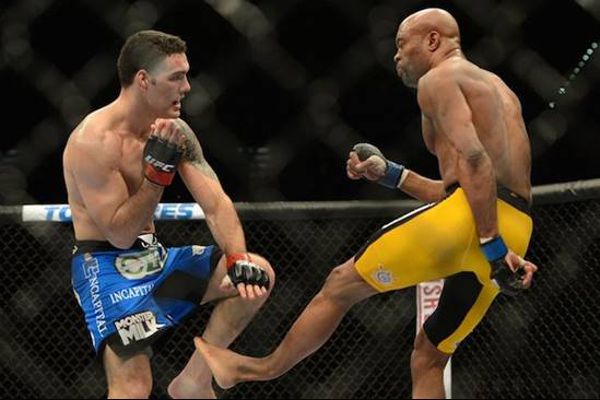
There are various head injuries in martial arts. The head is a desirable goal because a well-directed blow to the head often knocks the opponent down. Also, a blow that causes a short-term loss of consciousness of the opponent often leads to victory. In boxing a strike that affects the head primarily causes the movement of the head, then the movement of the brain mass. These moves are not simultaneous. In the first stage the skeleton of the skull is moved, and then only the brain mass follows that movement. In the second stage the skull comes to a standstill, but the brain mass is still moving in the direction of the force action.Thus, the injury mechanism necessarily causes damage to the brain mass at the point of impact or on the opposite side (contrecoup), or it damages the blood vessels between the meninges and the brain.
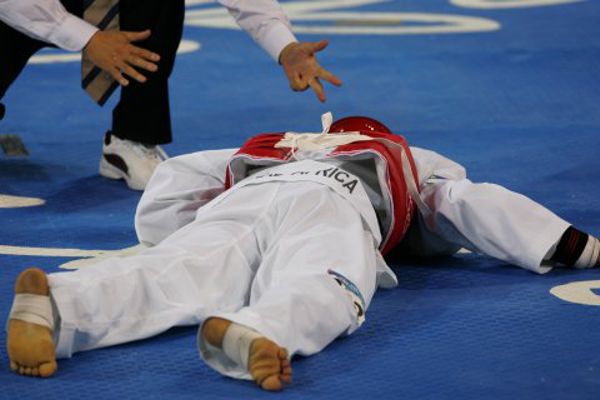
In martial arts, the most common consequence of the stroke in the head is brain concussion – commotio cerebri, which is manifested by functional brain function disorders, without any proven morphological changes. The headshot that is strong enough to cause the condition is typical of a martial arts called knockout (KO). This is a state of combat disability (mostly a short-term lack of consciousness and disturbed motorics) that lasts for about ten seconds or more, caused by various blows to the head, neck, and in the body, ie in the left side of the chest or in the liver area (then a mild unconsciousness is felt). After the brain concussion, the athlete may return to sports activities in ten to fifteen days, and compete, depending on the severity of the injury, in two to three months.
Eye injuries are very common in martial arts. They can be different and their outcome depends on the type of injury, as well as on various possible early and late complications. The neck injuries, ie the cervical spine, are also not a rare occurrence.
If an athlete fights without proper teeth protection that is prescribed, teeth, tongue, lips injuries and various bone fractures, especially the lower jaw, may happen. One of the typical injuries of athletes of various martial arts is the injury above the eye known as the supraorbital arch rupture. Also,various blows in the nose can break the nasal bone and the nasal cavity. Such repeated and incorrectly treated injuries deform the nose, resulting in a typical boxing nose. Sometimes frequent strokes in the eye cause an injury similar to wrestling – othematoma or deformation of the outer ear. It has been also found that with some athletes, due to frequent head injuries, as well as a greater number of ear blows, this causes partial hearing loss.
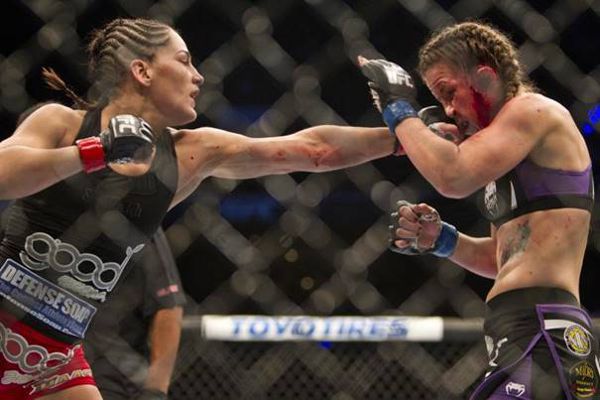
During a long-standing sports career, some professional fighters in some martial arts go through hundreds of fights in which they gain thousands of stronger or weaker blows in their heads. Similarly, although something to a lesser extent, happens to amateurs. The consequences of frequent brain shaking are small brain tissue damages. The feature of brain tissue is that it has very little tendency to heal, and there is no regeneration of specific tissue at all. Due to the frequency of all these injuries, in some of the combatants, later, there are gradual changes in the brain structure, which ultimately cause the known condition first described by Dr. Martland, followed by Dr. Carrel, Dr. Muller, Dr. Jokl, Dr. Cava, as well as many other sports doctors. So today we usually deal with the post-traumatic encephalopathy of boxers.
Some time ago it was considered that this damage was mostly connected only to boxers, but today it is known that the same damage affects savate fighters (French boxing), kick boxing fighters, Muay Thai fighters, MMA fighters (UFC) as well as some other ones. According to Dr. Steinhaus, even about 7% of all fighters (competitors) show signs of milder, and about 5% of the fighters are signs of chronic post-traumatic encephalopathy. Various experts in martial arts, for example, various trainers, sports doctors, sports workers, sports journalists, and athletes themselves in various countries have given this phenomenon or syndrome different, more or less descriptive names. Thus, for example, in America, the term punch drunks are used for the appearance of combatants in the United States, the Germans mention the name-weiche Birne (soft pear), the French- d’ebriete traumatique (traumatic abhorrence).
In the initial phase of this injury the person (contestant) has symptoms like headaches, vomiting, drowsiness etc. and during this first stage the fighter also shows significant changes in character. The fighter (contestant) gradually becomes euphoric, arrogant and irritable. Also, the fighter gradually loses self-criticism. Most fighters who have this syndrome have increased tetanus reflexes, slower pupil reactions, and balance disorders. Everyone that has a better martial art knowledge, as well as who is a better trainer, sports physician or experienced fighter (competitor), notices these psychological changes of the fighter (contestant), but does not often recognize, misunderstands it, or deliberately ignores its meaning.
The transition to the second stage is usually unnoticeable, and is marked by mental or neurological deterioration. The fighter with previously fast reflexes becomes considerably slower. Also, too much sensitivity to the blows is obvious and it is a phenomenon known as the glass jaw. The third and final stage of the injury usually occurs when the contestants (fighters) cease to actively engage in martial arts and leave the sport completely or become coaches. Common headache is the most important symptom. Disturbances in thought and perception are considerably enhanced, and both hearing loss and frequent dizziness are noticed. Such persons are prone to melancholy, which is why they often get addicted to alcohol or various antidepressant tablets. Speaking disorders like stuttering or harder pronouncing of complex words have become a commonplace. Such persons reflexively perform typical combat movements when excited. In the final stage, the process usually stagnates, but improvements are not noticeable.
The only correct measure to apply in this situation is the complete cessation of martial arts, both as a competitor and as a coach (the trainer can then only be in a certain status – a coach advisor).


